As of the most recent US Census, nearly 100K Pierce County residents identify as Black or African American.
This group has seen above average population growth over the last decade (22% vs 16%). And even greater is the growth among multi-racial residents who also identify as Black or African American (54%).
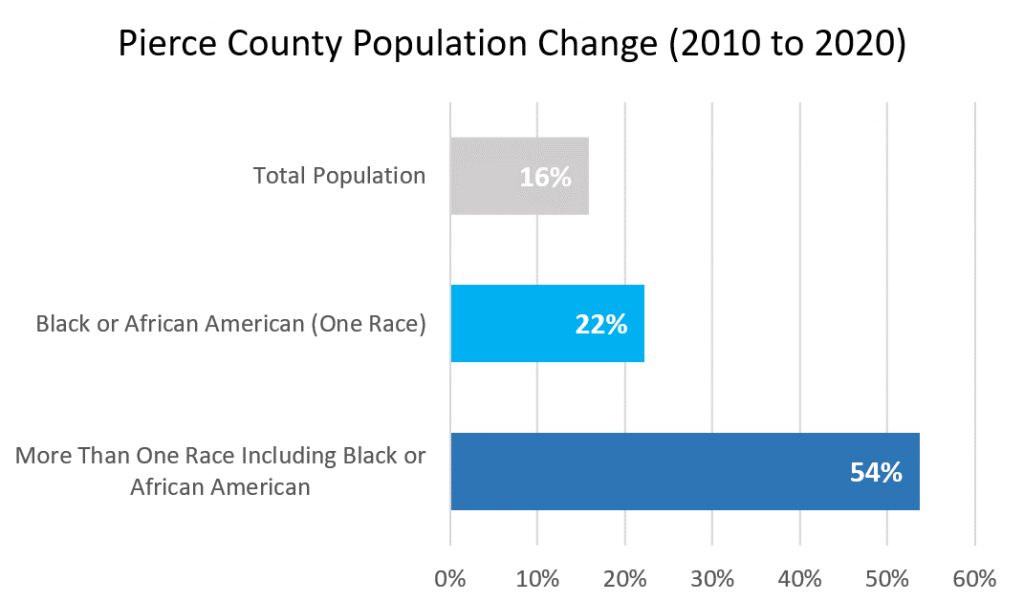
However, economic disparities persist for Black workers. The median wage for Black and African American workers is $32,435 vs. $40,941 overall. The gap is even greater when compared to White, Non Hispanic/Latino workers, who earned a median wage of $45,000.
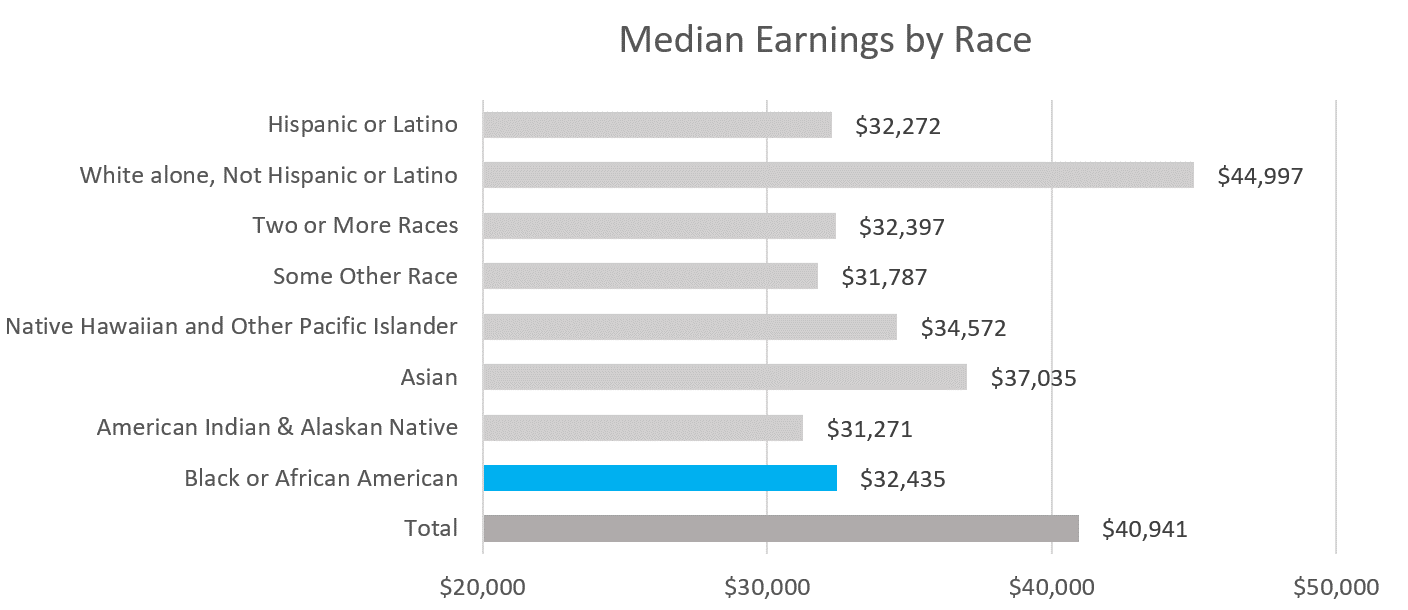
Occupation segregation, a key driver of wage inequity, also continues to present a challenge for the local economy. 37.5% of white workers are employed in Management, business, science, and arts occupations versus, just 27.6% of Black or African American Workers.
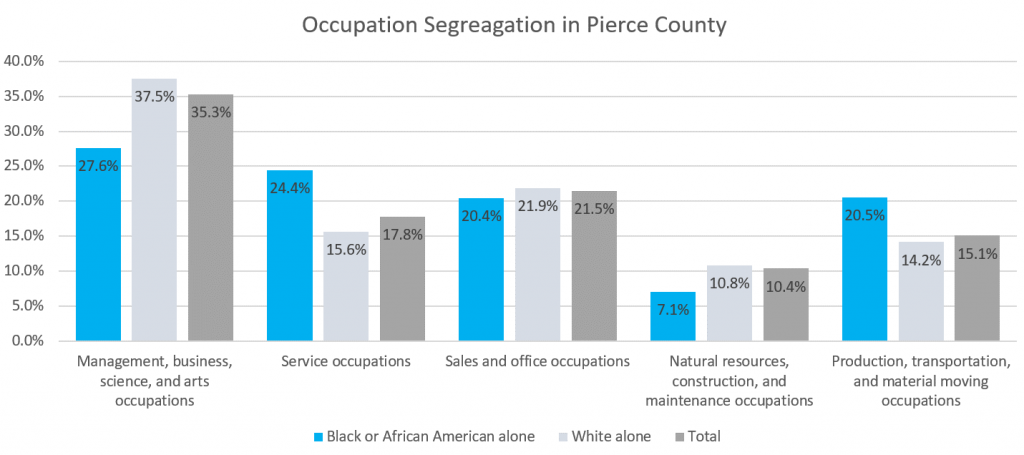
And, while employment has recovered for many groups, Black and African American workers have seen the most persistent impacts of the pandemic.
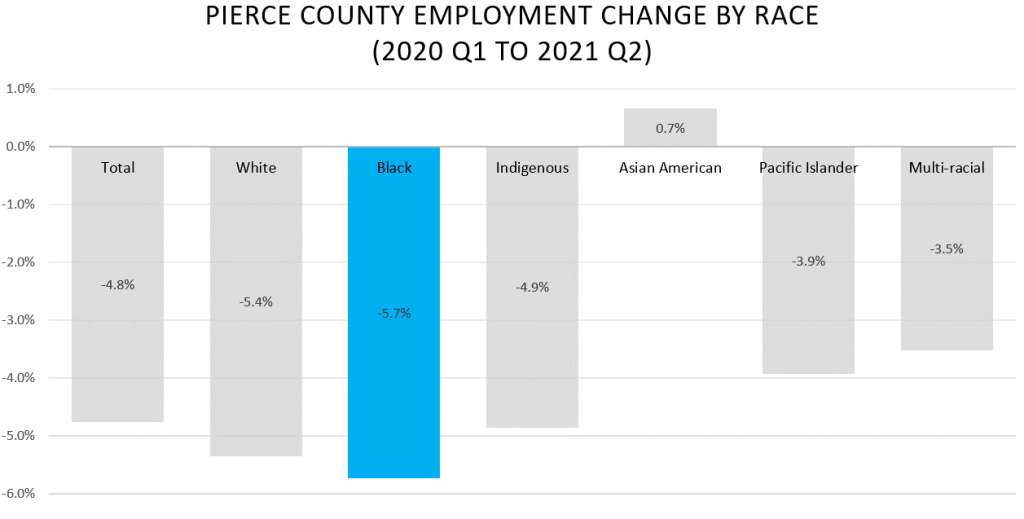
Nationally
But there may be a silver lining from emerging national numbers. In 2019, there were 134,567 Black-owned employer businesses (businesses with more than one employee) in all sectors of the U.S. economy – an 8% hike from the 124,551 Black-owned employer businesses in 2018, according to the Annual Business Survey.
African‐American businesses were especially hard hit by the pandemic experiencing an estimated 41% drop in business activity between February and April 2020.
However, according to recent research from the University of California, Santa Cruz, the number of Black-owned businesses in the U.S. is currently around 30% above pre-pandemic levels and that growth is being driven largely by Black women.
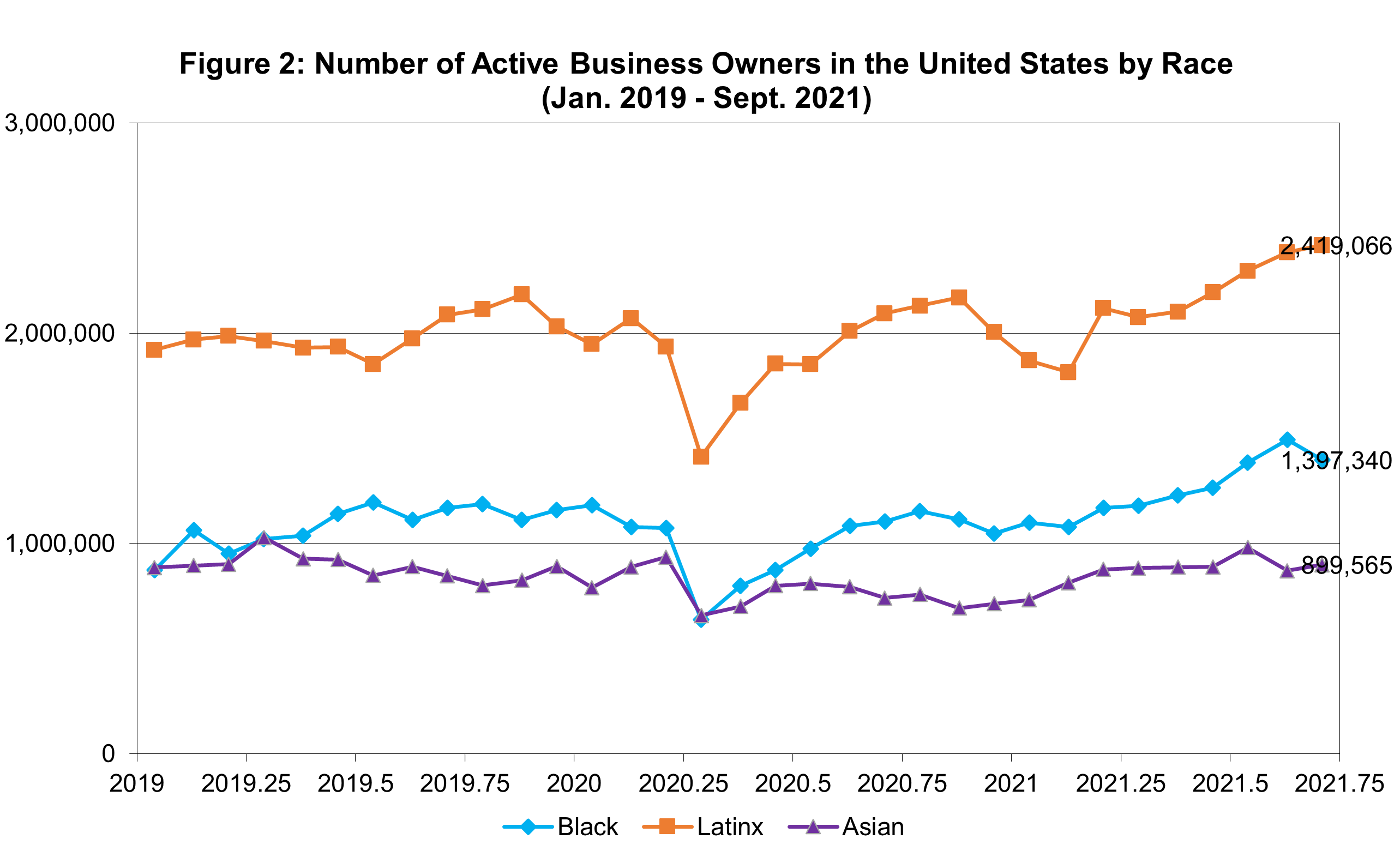
One important highlight here is that we’re likely seeing significant growth in black- and other minority-owned establishments that have the potential to grow into employer establishment and innovate in new spaces and ways our economy has not seen for some time. But nascent businesses are much more susceptible to attrition, especially in volatile economic periods, so business supportive services and economic envelopment will be key in the years ahead.

